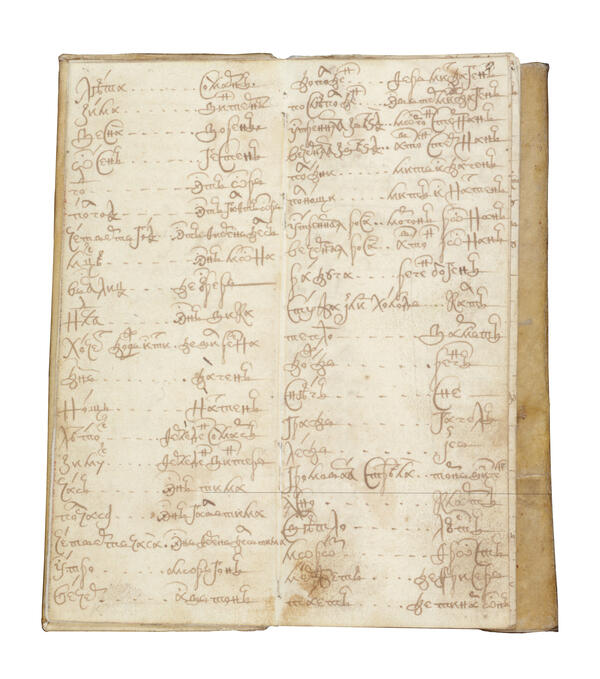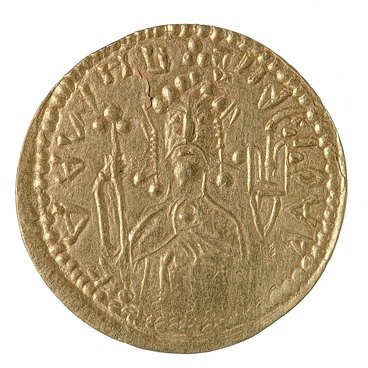The notebook from the collection of the State Historical Museum belonged to the Koshkin merchant family from Novgorod and was passed down for generations. The founder of the trading dynasty, Stepan Koshkin produced malt. He conducted trade business mainly outside of Veliky Novgorod, and sometimes traveled abroad — to Sweden, which in the 17th and 18th centuries regularly exchanged goods with Russia.
In the middle of the 17th century, the family business passed into the hands of Timofey Koshkin, Stepan Koshkin’s son. By 1663, he was already listed as a member of the merchant nobility of Novgorod. His family settled on Zapolskaya Street, next to the Saints Boris and Gleb Cathedral: the richest and most successful merchants lived in this area of the city.
In the 1690s, Timofey Koshkin stopped making trips outside of Veliky Novgorod and conducted business from home. His sons Nikifor and Nikita traveled to Sweden in his stead. They sent “to their dear father” in Novgorod all the proceeds and paid their business partners with “a letter signed by him”.
The Koshkin brothers regularly came to Sweden with their goods and stayed at the Russian Gostiny Dvor (a merchant yard) in Stockholm. In addition to comfortable housing, the city authorities offered nice offices, where goods could be stored, and provided reliable security.
They crossed the Baltic Sea on their own ships, and sometimes other merchants’ goods were transported on them for an additional fee. To Stockholm, the Koshkin brothers imported hemp, flax, bleached and dyed linen, fur, leather goods. In Sweden, they bought exclusively metal: iron and items made of it, steel, copper, brass. Almost all of these goods were delivered by them to Moscow, and from there they returned to Veliky Novgorod.
In addition to business notes, brothers Nikifor and Nikita Koshkin kept a Russian-Swedish phrasebook in their notebook, which helped them to explain themselves to foreign merchants in Stockholm. It included expressions related to trade, as well as polite words, wishes, congratulations and phrases that could be used for an everyday conversation about the weather or household affairs. The pages of the notebook are made of parchment — a thin material made from specially prepared skin of an animal.
In the middle of the 17th century, the family business passed into the hands of Timofey Koshkin, Stepan Koshkin’s son. By 1663, he was already listed as a member of the merchant nobility of Novgorod. His family settled on Zapolskaya Street, next to the Saints Boris and Gleb Cathedral: the richest and most successful merchants lived in this area of the city.
In the 1690s, Timofey Koshkin stopped making trips outside of Veliky Novgorod and conducted business from home. His sons Nikifor and Nikita traveled to Sweden in his stead. They sent “to their dear father” in Novgorod all the proceeds and paid their business partners with “a letter signed by him”.
The Koshkin brothers regularly came to Sweden with their goods and stayed at the Russian Gostiny Dvor (a merchant yard) in Stockholm. In addition to comfortable housing, the city authorities offered nice offices, where goods could be stored, and provided reliable security.
They crossed the Baltic Sea on their own ships, and sometimes other merchants’ goods were transported on them for an additional fee. To Stockholm, the Koshkin brothers imported hemp, flax, bleached and dyed linen, fur, leather goods. In Sweden, they bought exclusively metal: iron and items made of it, steel, copper, brass. Almost all of these goods were delivered by them to Moscow, and from there they returned to Veliky Novgorod.
In addition to business notes, brothers Nikifor and Nikita Koshkin kept a Russian-Swedish phrasebook in their notebook, which helped them to explain themselves to foreign merchants in Stockholm. It included expressions related to trade, as well as polite words, wishes, congratulations and phrases that could be used for an everyday conversation about the weather or household affairs. The pages of the notebook are made of parchment — a thin material made from specially prepared skin of an animal.



